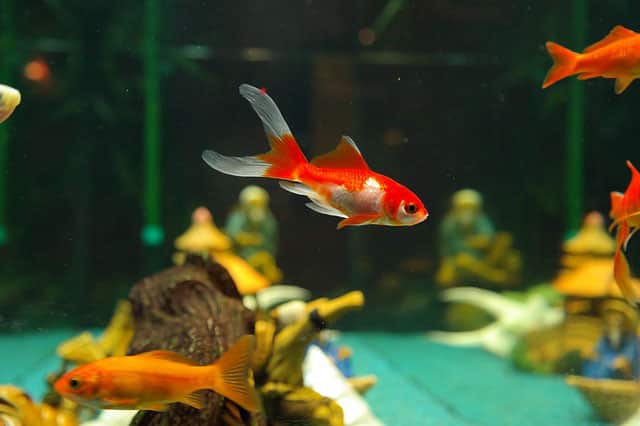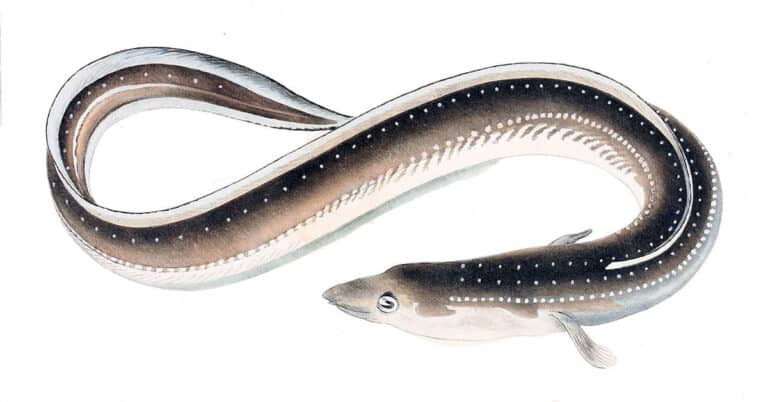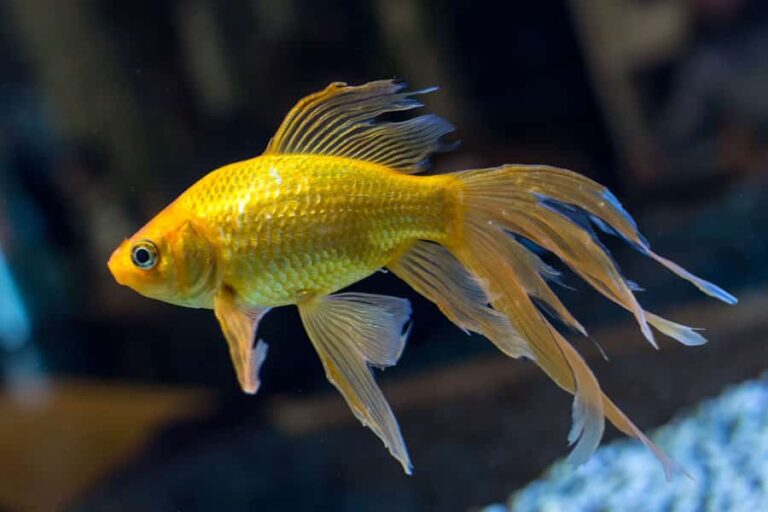Feeding Tropical Fish
Feeding your tropical fish is one of the most important steps in ensuring their overall health. You’ll want to choose high-quality tropical fish food, not just any old can of fish flakes.
Remember that the first ingredient listed on the food is the primary ingredient. In nature, fish eat other fish. Choose a fish food that is as close to natural as possible. Some fish foods include cornmeal as the first ingredient; this is unnatural for a tropical fish. The best quality foods use whole fish. Poor quality foods include beef products, which are not easily digestible by fish. Feeding your fish poor-quality foods will increase the amount of waste in the tank, reducing the water quality. If you are choosing dry food for your tropical fish, find food with comparatively low-fat content. Like people, fish should not consume a large amount of fat.
Avoid buying large packages of food that cannot be consumed within a month or two. The quantity you should buy at a time depends on the fish that you keep. The vitamins and minerals in the fish food will begin to break down within a few months, even though a large canister of fish flakes could last one aquarium literally years since you only use a pinch at a time. Fish food can be stored in the refrigerator or freezer, and can be kept longer that way. Some fish foods other than flakes or pellets must be frozen, such as packaged bloodworms. Essentially, the two main types of fish food are dry food and frozen food.
An often overlooked source of fish food is live plants. When establishing an aquarium, you’ll need to decide between plastic and fresh plants. Fresh plants are part of a natural diet for many fish, some of whom are herbivores in the wild. Not all fish will thrive on the same diet; while some are naturally herbivores, others need fish or animal-based foods.
Each species of fish has its own food requirements. When buying your fish, make sure that you are willing to feed them the types of foods they need. If you have several species of fish, and each of them requires a different type of food, feeding them can become quite an endeavor. Some thrive on special pellets or bloodworms, so be sure that you can commit to their needs before selecting a fish.
Fish can get bored with the same diet day after day; you can mix it up with frozen foods or different varieties. Some foods are not designed to be your fish’s only source of foods; they don’t necessarily include all of the vitamins and trace minerals that your fish needs.
When feeding your fish, simply place the fish food on the top of the tank. It will slowly start to sink to the bottom, giving ample time for your fish to eat it whether they like to eat from the surface, the middle, or the bottom of the tank. Watch for any fish that do not seem interested in any food for an extended period of time, because they may be sick.
A fish’s stomach is about as big as its eyes. Even though most fish will act very excitedly when you first add the food to their aquarium, they cannot actually eat very much at one time. It is very important not to over feed your fish. When feeding, you should only give enough food as they can eat in five minutes. You should feed a small amount of food every 1-2 days. Fish are not meant to eat 2-3 times per day like humans do; in the wild, they may not eat every day. In fact, it is nearly impossible to underfeed most fish. Though it seems counterintuitive, adult fish can actually go longer between feedings than smaller fish that are still growing. The importance of feeding the right amount of food cannot be overstated. When you overfeed the fish, the uneaten food will settle to the bottom, causing water quality issues.
You may have docile or aggressive feeders in your tank. Aggressive feeders may eat food from any area of the tank. Docile feeders will not hunt out the food; they may only eat the food that happens to fall directly in front of their face.
Some fish only eat from the bottom of the tank, as the food settles onto the substrate. If the food is not making it to the bottom because other fish are eating it first, you may need to feed two different types of food at once. Other fish will only eat from the top of the tank or while it is in the middle of the tank, and will not even take a second look at it once it touches the bottom of the tank.
For many species of fish, you can tell how they will eat by looking carefully at their mouth positioning. Fish that have mouths that are slanted upwards and open on the top of their heads eat from the surface. These include Hatchet fish and African butterfly fish. Those with mouths in the middle of the face eat from the water column, or center of the tank. These include danio and tetra species. Fish with mouths on the bottom of their face or on the underbelly eat from the substrate. Most catfish species eat from the bottom of the tank.
Learning about how your fish feeds in the wild can help you adapt the feeding routine to their requirements. Predatory fish may be used to eating another fish only a few times per week; many herbivores are accustomed to eating small pieces of plants multiple times per day. No matter what kind of feeding schedule you establish, it is important to feed the fish regularly.
No matter how your fish eat, if they pass it up once, they are not likely to come back to it later. This food will settle into the substrate and may harm the water quality. Decomposing food can wreak havoc on your aquarium system. This is why it is so important not to over-feed your fish. If you see lots of fish food collecting on the bottom of the tank, it is a sure sign that you are feeding your fish too much or too often.

Having discovered a fondness for insects while pursuing her degree in Biology, Randi Jones was quite bugged to know that people usually dismissed these little creatures as “creepy-crawlies”.







